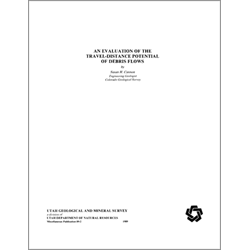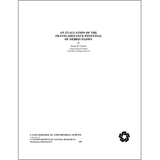An evaluation of the travel distance potential of debris flows (MP 89-2)
By: S. H. Cannon
Debris flows are characteristically able to travel long distances over gentle slopes, and they often damage whatever may be in their path. A weakness in current debris-flow hazard assessments is in the lack of information available on the potential extent of debris-flow runout into populated areas. The purpose of this study is to evaluate the travel-distance potential of debris flows as a function of a few variables that are easily measured in the field and that are consistent with current knowledge of the physical properties of debris flows. Based on rheological models of debris flow, the variables considered as most important in determining the travel distance of debris flows are the volume of material that mobilizes from the scar, the slope over which the material travels, the channel morphology, and the strength of the slurry.
This study indicates that a multiple regression model is inappropriate for evaluating the effect of these variables on the travel distance of debris flows. Consideration of the lag rate, the rate at which material is deposited as a debris flow travels down a slope, is suggested as an approach for determining how far a debris flow of a given volume will travel.
Other Information:
Published: 1989
Pages: 35 p.
Location: Utah
Media Type: Paper Publication







